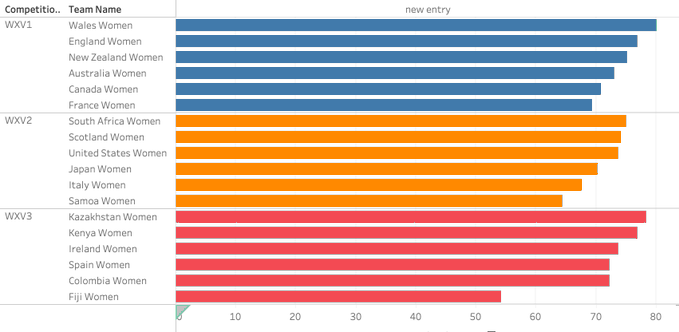What The Data Tells Us About WXV 2023 - Part 2: 22 Entries
Analyst, writer and coach Sam Larner explores data from WXV
In a 3-part series, coach, analyst and writer Sam Larner, goes through data from the 2023 WXV to look at trends within international women’s rugby. The articles explore territory, entries into the 22 and where teams play on the pitch. In our second article Sam looks at entries into the 22.
Thanks to @Oval_Insights, we have a huge amount of data for every game in WXV - over 58,000 data points. I’ve dug through them to see what we can learn and where the game is won and lost.
Part 2: 22 Entries
We know that the more entries a team has in an opposition 22, the better they will do, generally. In each of the WXV tiers, the team with the most 22 entries came top of their league.
When defending, the amount of entries a team allows into their own 22 is also critical. Wales were mid-pack by entries created, but a long way off the pace by 22 entries allowed. Ideally, you want to be good at both but you can't be bad at both and competitive.
We can also see where those possessions which feature a 22 entry begin. On average, 22 entries which end with a try begin on the 75m mark, those which end negatively start on the 70m mark.
Logically, it makes sense. If two teams gain 20m, but one starts 20m away and the other starts 40m away, then one will get a try and the other won't. Fiji were successful with their 22 entries in spite of of them starting so far from the opposition line.
In fact, this comes up quite a lot where Fiji broadly played well but their poor starting field position, caused by a lack of length in their kicking, left them short of where they could have reached.
Some questions to think about from Sam and Jess:
Do you think it's harder to gain 22m in the 22m than it is anywhere else? If so, why?
How could you structure training games to replicate 22 entries?
[Original thread posted on Twitter Jan 2024, version has been edited and published Jan 2024]







